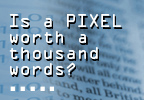



The advent of new digital technologies has spawned an increased focus on “new media” composition. Increasingly, scholars discuss the appropriate theories of composition relevant to a digital rhetoric. Despite this theoretical debate, there seems to be a dearth of what Cheryl Ball terms “new media scholarship” (as opposed to scholarship about new media) as well as opportunities for publishing such scholarship (2004).
This divide between theory and practice became personally evident as I attempted to complete a final project for a doctoral course (“Text and Technologies”). It became quickly apparent that although I had an understanding of theory and a fairly proficient skill set in designing web pages, I was not as comfortable completing this project in a “new media” format as I would have been writing a traditional print-based project. This also was the case for one of my colleagues [video, 2:10].
Clearly, there is a gap between theory and praxis. Attempts to compose in new media elicit questions of whether the nature of argument has changed. Whereas the typical journal article or final paper follows a rigidly linear progression, new media technologies allow for non-linear argument and organizational strategies. Short of scripting linear paths through an online document, how can the writer be assured that the reader encounters a complete argument? In the case of the graduate student, how can she or he be assured that an instructor has seen the full scope of the argument presented (particularly troubling for students since, invariably, a grade is involved)?
For graduate students and scholars considering potential publication, new media composition also raises questions about format, length and navigation. While it may be comfortable to assume that a 15 to 20 page paper will be of suitable length for publication, how does one determine an equivalent length when considering individual web-based lexia, images or video content? This uncertainty also breeds uncertainty regarding how new media projects will be evaluated. Will content be prized over form? Should the challenges associated with composing new media be taken in to account?
Introduction • Essential questions • Methodological overview • Home